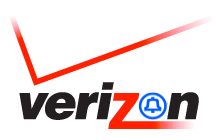
Bell Companies that are part of Verizon Communications:**









*Note: Verizon Communications is comprised of two of the original “Baby Bells” that were spun-off from AT&T in 1984; Bell Atlantic and NYNEX. GTE (General Telephone), a non-Bell Company, merged with Bell Atlantic, creating Verizon, however GTE is not referenced on this page, as it only relates to the Baby Bells.
Bell Atlantic is the original 1984 AT&T divestiture name and logo given as the holding company for the following Bells:








NYNEX is the original 1984 AT&T divestiture name and logo given as the holding company for the following Bells:




Verizon Products & Services:
Wireless, TV, Bundles, Internet and Voice
Communications for large enterprise and government
Wireless, TV, Bundles, Internet and Voice
Wireless service
Fiber optic delivered TV or DirectTV (satellite)
Designed for the first time user, Incredible ease of use, Powerful “WebsiteOS” control panel, Helpful technical support team, Personalized POP and web-based e-mail, Website creation tools, E-commerce solutions, Free domain parking, No setup fees, 30 Day Risk Free Guarantee.
The most convenient way to manage your MCI account is to handle it yourself - online. View your invoice, make a payment and much more - whenever you like, 24 hours a day, 7 days a week. With MCI, managing your account online is fast and easy. If you need to speak to someone right away, our toll-free Customer Service numbers are accessible below.


For a genealogy chart of the Bell Atlantic / Diamond State Telephone Company, click HERE.

2009 Verizon Global IP Network Map:
Click on map to view larger image of the Verizon Global IP Network Map.

Here is a photo sent to me by Frank Forrest of his bucket truck. Compare the photo below to THIS photo from many decades ago.
1997 Ford Super Duty Bucket Truck with 460cid engine
Click on image above to view full-size
Frank also sent the following snake photos along with this description:
“Here is a set of photos, which were distributed through Verizon this past summer. It shows a pair of copperhead snakes that had made a home in one of our TSI cabinets. One of the snakes had electrocuted himself, and was very dead. The other had to be persuaded to come out of his nesting place. These pictures were taken somewhere in West Virginia.”
Click on images above to view full-size

Verizon Van
Photo courtesy of Bill Cook.
Click on image to show full-size view.
“Here is a picture I found of the vans. You can barely see it in this photo,
but on right rear door is the Bell logo, and the Vz logo is on the left.” - Bill Cook.

A spoof from a website visitor named Brock:

Looks like a great idea for Verizon’s logo!

Verizon History
Verizon Communications Inc., based in New York City and incorporated in Delaware, was formed on June 30, 2000, with the merger of Bell Atlantic Corp. and GTE Corp.
Verizon began trading on the New York Stock Exchange (NYSE) under the VZ symbol on Monday, July 3, 2000. It also began trading on the NASDAQ exchange under the same symbol on March 10, 2010.
The symbol was selected because it uses the two letters of the Verizon logo that graphically portray speed, while also echoing the origin of the company name: veritas, the Latin word connoting certainty and reliability, and horizon, signifying forward-looking and visionary.
While Verizon is truly a 21st century company, the mergers that formed Verizon were many years in the making, involving companies with roots that can be traced to the beginnings of the telephone business in the late 19th century.
Government regulation largely shaped the evolution of the industry throughout most of the 20th century. Then, with the signing of the Telecommunications Act on February 8, 1996, federal law directed a shift to more market-based policies. This promise of a new competitive marketplace was a driving force behind Verizons formation.
Verizon’s Formation:
The mergers that formed Verizon were among the largest in U.S. business history, culminating in a definitive merger agreement, dated July 27, 1998, between Bell Atlantic, based in New York City, and GTE, which was in the process of moving its headquarters from Stamford, Conn., to Irving, Texas.
GTE and Bell Atlantic had each evolved and grown through years of mergers, acquisitions and divestitures. Each had proven track records in successfully integrating business operations.
Prior to the merger, GTE was one of the worlds largest telecommunications companies, with 1999 revenues of more than $25 billion. GTE served approximately 35 million access lines through subsidiaries in the U.S., Canada and the Dominican Republic, and through affiliates in Canada, Puerto Rico and Venezuela. (Access lines are the individual landline connections from a customers premises to the telecommunications network.) GTE was a leading wireless operator in the U.S., with more than 7.1 million wireless customers and the opportunity to serve 72.5 million potential wireless customers.
Bell Atlantic was even larger than GTE, with 1999 revenues of more than $33 billion. It served 43 million access lines, including 22 million households and more than 2 million business customers. It also managed one of the worlds largest and most successful wireless companies, with 7.7 million Bell Atlantic Mobile customers in the U.S. and international wireless investments in Latin America, Europe and the Pacific Rim. Bell Atlantics Directory Services was the worlds largest publisher of directory information, including operations in Europe.
The Bell Atlantic - GTE transaction valued at more than $52 billion at the time of the announcement was designed to join Bell Atlantics sophisticated network that served its densely-packed, data-intensive customer base in 13 states from Maine to the Virginias with GTEs national footprint, advanced data communications capabilities and long-distance expertise. The purpose was to create a company with the scale and scope to compete as one of the telecommunications industrys top-tier companies.
The merger closed nearly two years later, following review and approvals by Bell Atlantic and GTE shareowners, 27 state regulatory commissions and the Federal Communications Commission (FCC), and clearance from the U.S. Department of Justice (DOJ) and various international agencies.
The beginnings of Verizon Wireless
In the meantime, on September 21, 1999, Bell Atlantic and London-based Vodafone AirTouch Plc (now Vodafone Group Plc) announced that they had agreed to create a new wireless business with a national footprint, a single brand and a common digital technology composed of Bell Atlantics and Vodafones U.S. wireless assets (Bell Atlantic Mobile, AirTouch Cellular, PrimeCo Personal Communications and AirTouch Paging).
This wireless joint venture received regulatory approval in six months. The new Verizon brand was launched on April 3, 2000, and the wireless joint venture began operations as Verizon Wireless on April 4. GTEs wireless operations became part of Verizon Wireless creating the nations largest wireless company when the Bell Atlantic - GTE merger closed nearly three months later. Verizon then became the majority owner (55 percent) of Verizon Wireless, with management control of the joint venture.
When Verizon Communications began operations in mid-2000, the leaders of Bell Atlantic and GTE shared management responsibility for the company. Former GTE Chairman and CEO Charles R. Chuck Lee became Verizons founding Chairman of the Board and co-CEO, while former Bell Atlantic CEO Ivan Seidenberg became Verizons founding President and co-CEO. In accordance with a leadership transition plan announced at the time of the merger, Lee retired from Verizon in 2002.
Seidenberg retired as Chairman and CEO in 2011 and was succeeded by Lowell C. McAdam, who became CEO in August 2011 and Chairman on Jan. 1, 2012. McAdam was Verizons President and COO before becoming CEO, and he was CEO of Verizon Wireless prior to that.
Recent Verizon history
A bellwether for the industry, Verizon Communications was added to the Dow Jones Industrial Average in 2004. Verizon has a regional presence in wireline and national presence in wireless markets, with well more than 100 million Americans connecting to a Verizon network daily.
With the addition of MCI Inc., in 2006, Verizon is also a leading provider of advanced communications and information technology solutions to large-business and government customers worldwide.
With the acquisition of Alltel Corp. in early 2009, Verizon Wireless became the largest wireless service provider in the U.S., as measured by the total number of customers.
Verizon employed a diverse workforce of 177,700 and generated nearly $132 billion in 2015 revenues, ranking #15 in the Fortune 500.
Verizon operated Americas most reliable wireless network, with more than 112 million retail connections worldwide. Wireless revenues, which have exceeded revenue from wireline services since 2008, totaled nearly $92 billion in 2015.
Verizon provided communications and entertainment services over Americas most advance fiber-optic network, and delivers integrated business solutions to customers in more than 140 countries.
The companys headquarters is located at 1095 Avenue of the Americas in New York City, and it has a major operations hub, the Verizon Center, in Basking Ridge, N.J.
In 2014 and 2015 alone, Verizon invested a total of nearly $35 billion to maintain, upgrade and expand its technology infrastructure. Verizons strong cash flow from operating activities ($38.9 billion in 2015) has enabled the company to invest in growth areas particularly broadband and wireless even as the company has maintained a healthy dividend. In September 2016, Verizons Board of Directors approved its tenth consecutive annual dividend increase.
-
2015 Verizon acquires AOL Inc.
-
2017 Verizon acquires Yahoo Inc.
-
2017 Verizon acquires merges YAHOO! and AOL to create new subsidiary called Oath Inc.
-
2019 Verizon replaces the oath brand with Verizon Media.
-
2021 Verizon sells Verizon Media to Apollo Global Management.



Reliable, secure high-speed internet
With CenturyLink Simply Unlimited Internet, you can choose from a wide range of available speeds that fit your online needs. Plus, you can connect several devices with super-fast in-home WiFi.
Order Now







